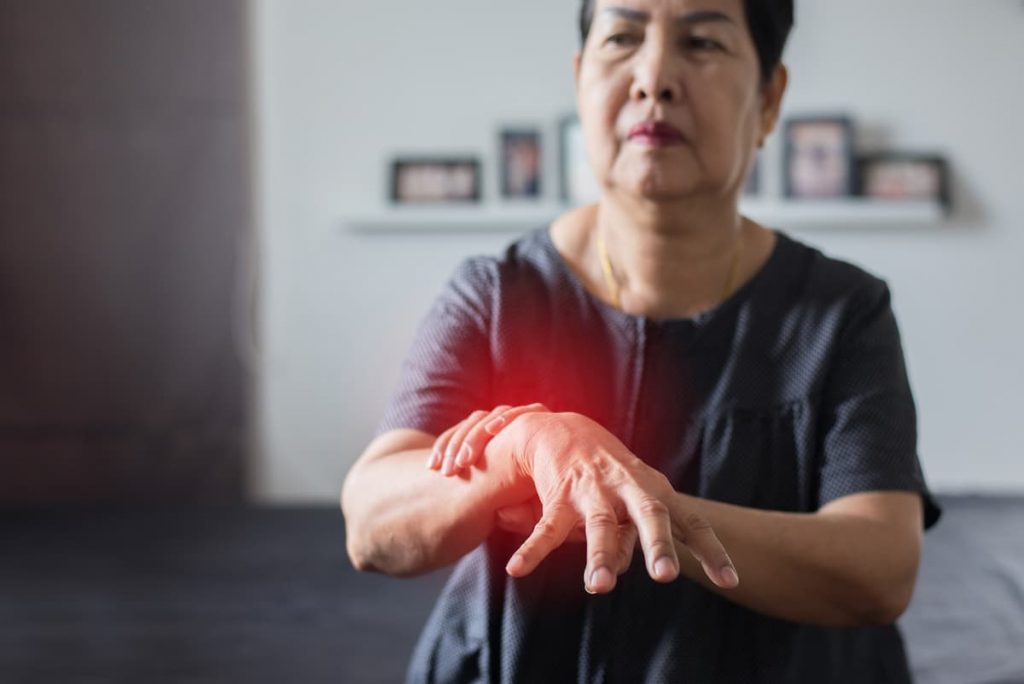
Menopause is a natural process that all women experience throughout aging. It is marked by the end of a woman’s menstrual cycles and is a time of transition. It can occur anywhere between the ages of 40 and 60 though the average age of menopause is 51.
While menopause is a natural process, it can also cause some uncomfortable symptoms, such as hot flashes, weight gain, and mood swings. It can also lead to bone loss. Bone loss is a common concern for many women during and after menopause. Read on to learn more about menopause and bone loss.
What are the risk factors for developing osteoporosis during menopause?
Some women may be at a higher risk for developing osteoporosis during menopause than others. A few risk factors that may increase a woman’s risk for osteoporosis include a family history of osteoporosis, being a postmenopausal woman, having a thin frame (i.e. being underweight), being a Caucasian or Asian female, smoking, and having a sedentary lifestyle. Women who have had their ovaries removed due to medical reasons are also at an increased risk for developing osteoporosis due to the lack of natural estrogen production. Other medical conditions such as thyroid and adrenal diseases, celiac disease, rheumatoid arthritis, and diabetes can also increase a woman’s risk for developing osteoporosis. Additionally, certain medications, such as prednisone, can also affect bone health and lead to an increased risk for osteoporosis and/or reduced bone mass density.
How can you prevent bone loss during menopause?
The most important thing you can do to prevent bone loss during menopause is to get enough calcium and vitamin D. Calcium helps to strengthen bones and vitamin D helps your body to absorb calcium. The recommended amount of calcium is 1,000-1,200 mg per day from food sources like dairy products, fortified foods, and greens. Most people need 600-800 IU of vitamin D daily, which can be found in some foods (e.g. fish, eggs, and fortified milk) as well as sunshine. Additionally, you should exercise regularly to help keep your bones strong. Osteoporotic bones become brittle with time and can easily break due to falls, so doing weight-bearing exercise such as walking, running, and aerobics can help build strong muscles and bones. Also, if you smoke or drink alcohol excessively, consider cutting back or quitting to help prevent bone loss.
What treatments are available for osteoporosis?
If you are diagnosed with osteoporosis, there are a variety of treatments available. Your doctor may suggest lifestyle modifications such as increasing calcium and vitamin D intake, exercising regularly, and quitting or reducing smoking/alcohol consumption. You may also be prescribed a bisphosphonate medication, which helps stop or slow bone loss. Additionally, hormone therapy may be recommended for postmenopausal women to help rebuild bone. This type of therapy involves taking low-dose estrogen or a combination of estrogen and progesterone. Other medications, such as calcitonin, teriparatide, and denosumab, may also be recommended to help reduce your risk of bone fracture. Speak with your doctor to determine which regimen is best for you.
Conclusion
If you are between the ages of 40 and 60, visit our contact page to book an appointment with our team of OB/GYN experts. You are not on this journey alone and we look forward to helping you out.
